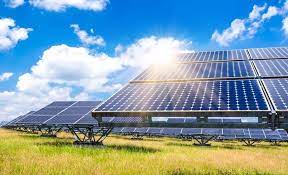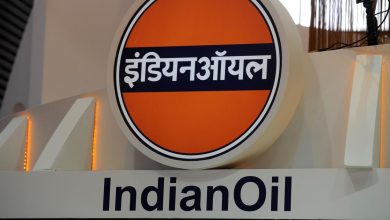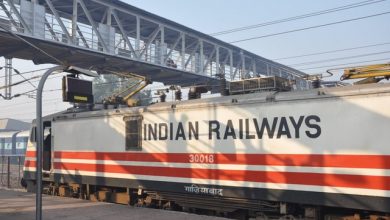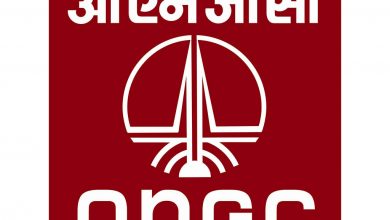Solar Continues To Be At The Forefront Of Energy Transition
Solar Energy is the Key Enabler for Achieving Net Zero Target

CO2 emissions have reached 34.6 BtCO2 in 2022 with an increase of 1.5% compared to 2021 and 49.9% compared to 2000. Industry accounts for 13.8 BtCO2 of carbon emissions- occupying a major chunk of 40% share.
In such a scenario, on the heels of COP28 in Dubai, the International Solar Alliance( ISA) during it’s sixth assembly in India released its reports that spell out that- The Solar Energy is the Key Enabler for Achieving Net Zero Target.
While Electricity consumption over the last twenty years reached 28,403 TWh in2022, a 93% increase in consumption in comparison with that of 2000. Major share of electricity is generated (38%) from coal, a fuel which accountable for the 48% of the total CO2 emission. The reduction of fossil fuels to generate electricity is necessary to reduce the overall CO2 emission thereby decreasing the concentration of GHGs in the atmosphere.
The G20 New Delhi Leaders Declaration signed upon the tripling of the global renewable energy target by 2030, accounting for 11,000 GW. Ahead of the upcoming UNFCCC COP28, breaking down these commitments and challenges can provide room for negotiations in Dubai. As per the Solar Technology report- cumulative solar deployment is expected to reach nearly ~5 terawatt by 2030, having crossed 1 terawatt in April 2022.
The key message of the reports were- Solar market is projected to double in 2025, from 2022 – Similarly, the Solar Market report points out that while the solar market is poised for tremendous growth, however, the path has a lot of challenges. The report discusses the global solar deployment scenarios for 2025, 2030, and 2050.
The report anticipates an annual solar PV market of 493 GW in 2025, more than double the 2022 levels. The cumulative total operating PV capacity is projected to exceed 2 TW by 2025 in all scenarios, reaching ranges of 2,381 to 2,622 GW, compared to 1.1 TW in 2022. In 2030, the total installed capacity for solar PV varies from 5.1 TW to 10.2 TW, with renewable energy’s share in electricity generation ranging from 59% to 89%. By 2050, total solar PV installed capacity is projected to reach 12.6 TW and potentially 63.4 TW, though most estimates fall within 17-25 TW.
Shri Raj Kumar Singh, Minister of Power and New & Renewable Energy, Government of India said: “Around 80 percent of the global population resides in countries that depend on fossil fuel imports, totalling a staggering 6 billion people. Renewable energy sources have the potential to supply 65 percent of the world’s total electricity by 2030 and decarbonise 90 percent of the power sector by 2050. The International Solar Alliance is steadfast in its commitment to Member Countries to make solar as the energy source of choice, foster environments conducive to attracting investments and ensuring ample energy availability to meet the surging global demands. Towards this, ISA through its Viability Gap Funding (VGF) mechanism provides a grant of USD 150,000 or 10% of the project cost (whichever is lower), per country per project. The Assembly decided to increase the range to 35% of the project cost, depending on the capacity and needs of the countries and their respective projects.”
Additionally, the Government of India is considering a $25 million investment as capital contribution in the Global Solar Facility, along with another $10 million from ISA.
Investment is concentrated in developed countries – According to the Solar Investment Report, investment in the solar energy sector is growing rapidly and accounts for $308 billion (11.5%) of overall energy investments, and while spending has increased, it is overwhelmingly concentrated in a few developed countries in the Asia Pacific Region, followed by Europe and North America.
Manufacturing is concentrated in China – Meanwhile, the solar manufacturing supply chain is geographically concentrated in the Asia Pacific region, particularly in China (80% market share), making the manufacturing sector vulnerable to supply chain instability. A way forward would mean emerging and developing countries, whose potential has not yet been realised, be given priority to increase global investment in solar PV to make the energy transition more inclusive.
The Co-President of the Assembly, H.E. Ms Chrysoula Zacharopoulou, France’s Minister of State for Development, Francophonie and International Partnerships said: “For France, the ISA is a key initiative to promote the development of clean energy and thus combat climate disruptions. It is playing its full part in this great project, with constant and growing support for our Alliance. Through the French Development Agency (AFD), we’ve financed over 1.5 billion euros worth of solar projects since 2016. France is taking action and we are determined to accelerate. Last year, we provided over 7.5 billion euros in climate finance to our partners. I sincerely believe that this Alliance has the capacity to provide solutions to one of the great challenges of our time, despite the fractures in the world.”
Investing in the renewable energy industry is primarily dominated by investments in the solar energy sector. It is interesting how solar power leads the global renewable energy investment and how much more is needed to achieve Net Zero. So far, ISA is facilitating over 9.5 GW of solar applications in 55 developing countries, including LDCs and SIDS, and has already provided training to nearly 4000 people across the developing world on ways to make a living out of supporting solar energy. With ISA and a successful G20 summit, India is in a position to leverage this and provide a platform to facilitate and bring focus on the challenges and gaps in finance, market and technologies for solar scalability.
Dr Ajay Mathur, Director General of International Solar Alliance, said: “We urgently need to accelerate the build-up of solar energy, especially in developing countries and in applications that influence the daily lives of those without access to reliable energy – such as getting electricity from solar mini-grids, powering agricultural pumps, running cold storages, etc. Capacity building and regulatory change are necessary enablers towards that. ISA is facilitating over 9.5 GW of solar applications in 55 developing countries, including LDCs and SIDS, and has already provided training to nearly 4000 people across the developing world on ways to make a living out of supporting solar energy. We are working on developing STAR Centres in countries which will be a hub of technology, knowledge, and expertise on solar energy. In addition, ISA is enabling solar mini grids to provide universal energy access, especially where grid extension is too expensive. Guarantees help in crowding-in private sector investment, and ISA has developed such a mechanism to provide guarantees through its Global Solar Facility to its member countries in Africa. We are also enabling entrepreneurs in these countries who can, with help, become major suppliers of solar energy across countries and regions.”
Solar PV on the rise :
- Cumulative global solar PV capacity has reached a record high of 1143 GW in 2022, representing an increase of 25% over 2021 levels
- In 2022, new players took the lead and the total installed CSP capacity increased from 6.3 GW in 2021, to 6.6 GW in 2022.
- Areas that can further boost the development of CSP around the globe is the retrofitting of coal plants with CSP and thermal energy storage
- In 2022, the Asia-Pacific (APAC) region has further solidified its position as a global solar leader by securing a substantial 59% of the annual installed capacity in 2022.
- Solar PV additions almost double every three years as per the learning curve. At this pace of progress, the TW-size annual market will be reached before 2030.
The writer of this article is Dr. Seema Javed, an environmentalist & a communications professional in the field of climate and energy




